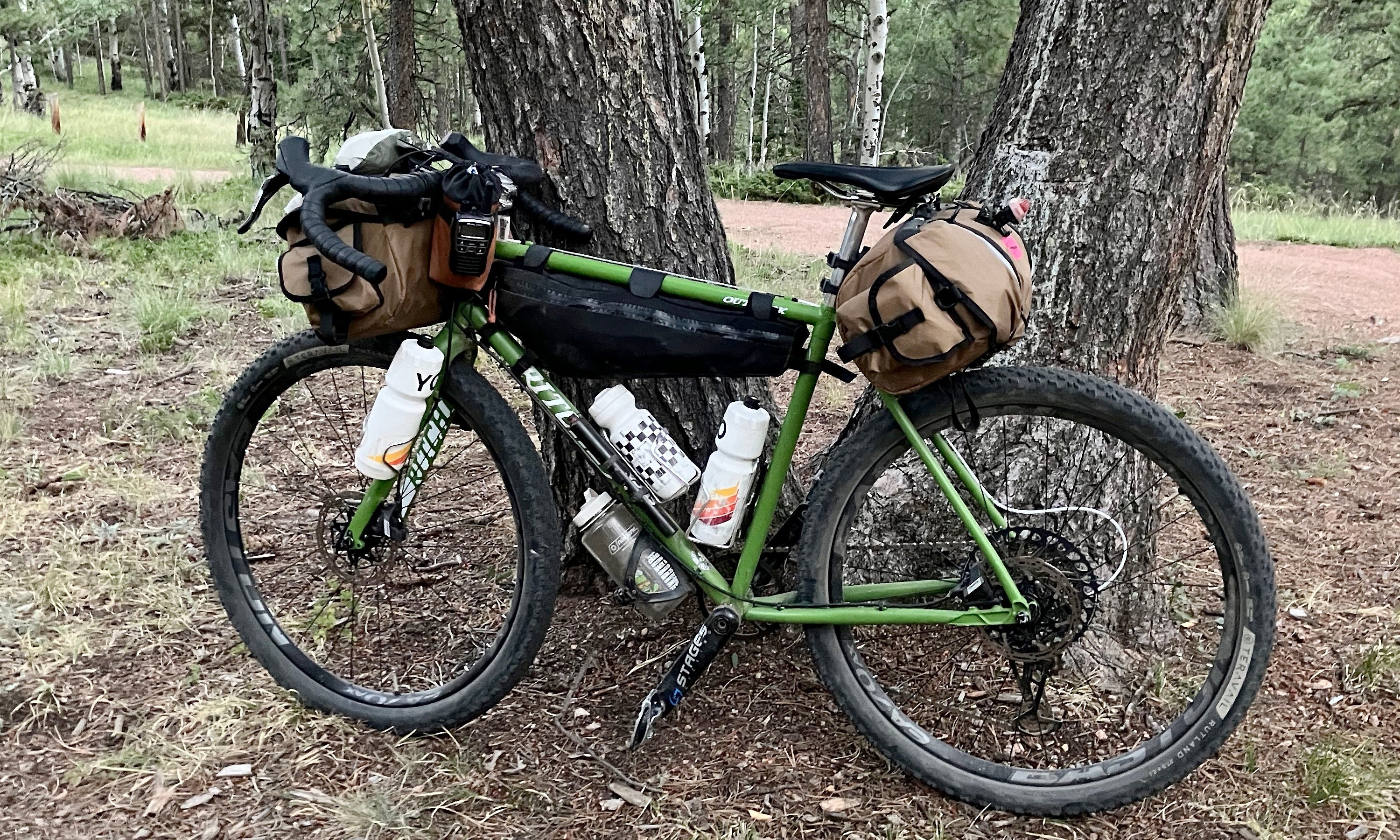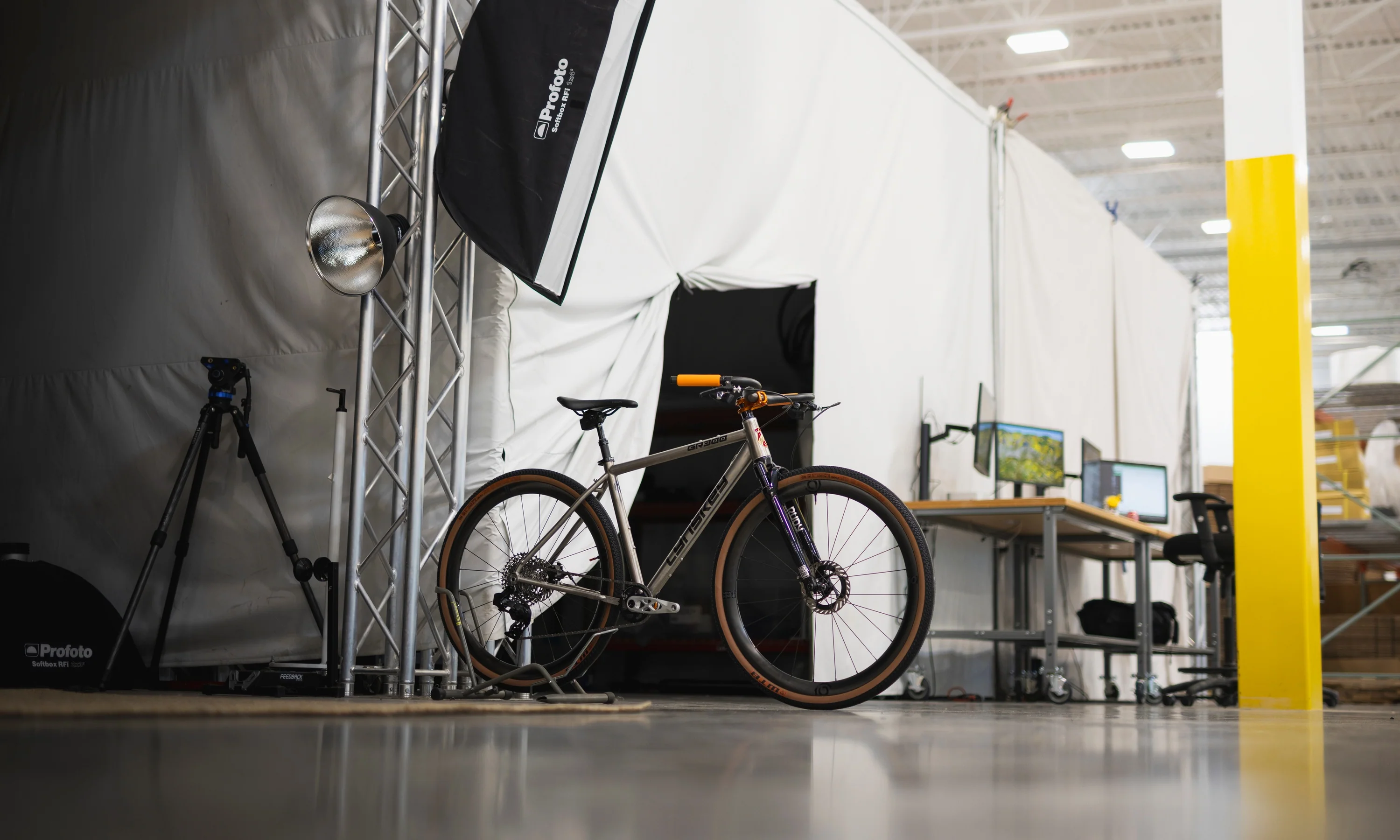A worn chain is bad news for your bike. Not only will it shift poorly, but it will accelerate drivetrain wear, leading to an expensive repair down the road. Monitoring chain wear and replacing it before it gets too worn is something every cyclist should know how to do. Fortunately, replacing a chain is easy to do at home with only one or two basic tools.
[button]SHOP CHAINS[/button] | [button]SHOP TOOLS[/button]
When to replace a bike chain
Are you asking if it’s time to replace your chain? Well, chances are it is time to replace your chain. Some riders change chains based on mileage or time, but there’s a lot of variation due to component brands and riding conditions. There’s no harm in replacing a chain too early, but replacing one too late is never good.
[product-block handle="progold-prolink-chain-wear-indicator"/]
To confirm that your chain is on its way out, get yourself an affordable and handy chain checker. This simple tool lets you check chain wear by measuring how much your chain has stretched. Check your chain regularly. Once it indicates that the chain is worn, replace it as soon as possible.
[newsletter]
How to replace your bike chain
Tools needed
[product-block handle="park-tool-ct-3-3-5-12-speed-chain-tool"/]
This job only requires one tool: a chain breaker tool. A chain breaker will allow you to remove your old chain and cut your new one to the correct length.
[product-block handle="park-tool-mlp-1-2-chain-link-pliers"/]
Quick link pliers are also nice to have but not an essential tool. These special pliers make it easy to undo quick links (sometimes called master links) for chain removal and lock in a new quick link during installation but they’re not mandatory.
Removing a worn chain
 To remove your old chain, cut it using a chain breaker tool. To use the chain breaker, pick any chain pin, align the chain breaker with the chain pin, and tighten the chain breaker until the chain breaker contacts the chain pin. Continue tightening, and you should hear a pop as the chain breaker presses the chain pin out. Drive the chain pin all the way out. You’ve now cut your chain and can remove it.
To remove your old chain, cut it using a chain breaker tool. To use the chain breaker, pick any chain pin, align the chain breaker with the chain pin, and tighten the chain breaker until the chain breaker contacts the chain pin. Continue tightening, and you should hear a pop as the chain breaker presses the chain pin out. Drive the chain pin all the way out. You’ve now cut your chain and can remove it.
 If your chain has a quick link installed, you can simply undo the quick link with quick link pliers. The quick link will be a different shape than the other links and sometimes a different color.
If your chain has a quick link installed, you can simply undo the quick link with quick link pliers. The quick link will be a different shape than the other links and sometimes a different color.
Measuring a new chain
Before installing a new chain it needs to be cut to the correct length. Chains come out of the box longer than needed to accommodate a wide range of bikes and drivetrains. There are a couple of easy methods for figuring out how long your chain needs to be.
Method 1: Count links
 If you’re replacing an old chain that already worked well on your bike, you can simply compare your new chain to the old one and cut it so it has the same number of links. You can count the links or lay the two chains side by side on a workbench to match up the number of links. When you’ve determined how long your new chain needs to be, cut it with your chain breaker.
If you’re replacing an old chain that already worked well on your bike, you can simply compare your new chain to the old one and cut it so it has the same number of links. You can count the links or lay the two chains side by side on a workbench to match up the number of links. When you’ve determined how long your new chain needs to be, cut it with your chain breaker.
NOTE: Quick links count as a link. Take that into consideration if your old chain doesn’t have a quick link installed. Also, when cutting your chain, keep in mind that inner links ALWAYS join outer links. Since most new chains are installed using a quick link, you will need to cut the chain so that the two ends of the chain are both inner links.
Method 2: Big big + 2 links
If you’re swapping to a different sized cassette or chainring(s), or installing a whole new drivetrain, then you’ll need to measure and adjust your chain length to fit. The easiest method is called “big big plus two.”
 Take your new chain and wrap it around the two biggest cogs on your drivetrain, i.e., the largest chainring, and the largest cassette cog. Do this without routing the chain through the derailleur. With the chain wrapped around the two largest cogs, pull it tight and bring the chain together to observe where it meets itself.
Take your new chain and wrap it around the two biggest cogs on your drivetrain, i.e., the largest chainring, and the largest cassette cog. Do this without routing the chain through the derailleur. With the chain wrapped around the two largest cogs, pull it tight and bring the chain together to observe where it meets itself.
 This is where the chain meets itself when wrapped around the two biggest cogs. From this point you'll add two additional links.
This is where the chain meets itself when wrapped around the two biggest cogs. From this point you'll add two additional links.
The goal is to cut off the excess chain, BUT you’ll add two additional links — that means add one outer and one inner link — before cutting. Adding two extra links ensures you have just enough chain length for it to go through the rear derailleur and access every gear combination.
However, if you have a 12-speed 1x drivetrain like SRAM Eagle and Shimano 12-speed mountain, you’ll need to add a bit more chain length to accommodate the wide-range cassette. For SRAM Eagle drivetrains add four links. Shimano recommends adding four links for hardtail mountain bikes and six links for full suspension mountain bikes.
NOTE: If you have a situation where measuring using big big plus two causes one end of the chain to be an outer link, add one more inner link to allow for quick link installation. If you’re unsure, it’s always better to err toward cutting your chain longer, because you can cut again later.
Install the new chain
Now that your chain is cut to length, you can route it through the derailleur(s).
 NOTE: Many rear derailleurs have a tab that can rub the chain if it’s installed incorrectly. Make sure your chain is routed on the correct side of this tab so it doesn’t rub, otherwise it’s going to make a lot of noise.
NOTE: Many rear derailleurs have a tab that can rub the chain if it’s installed incorrectly. Make sure your chain is routed on the correct side of this tab so it doesn’t rub, otherwise it’s going to make a lot of noise.
 To finish the installation, install the quick link. Bring the ends of the chain together with the two quick link halves inserted in the rollers. Then snap them together. Some quick links have a directional arrow printed on them. If it does, just make sure the arrow points in the direction the chain moves while pedaling.
To finish the installation, install the quick link. Bring the ends of the chain together with the two quick link halves inserted in the rollers. Then snap them together. Some quick links have a directional arrow printed on them. If it does, just make sure the arrow points in the direction the chain moves while pedaling.
 To lock the quick link, we can use quick link pliers, OR simply position the quick link at the top between the cassette and chainrings. While holding the rear brake or with the bike on the ground, apply pressure to the pedals. This should be enough to lock the quick link.
To lock the quick link, we can use quick link pliers, OR simply position the quick link at the top between the cassette and chainrings. While holding the rear brake or with the bike on the ground, apply pressure to the pedals. This should be enough to lock the quick link.
Check that your drivetrain shifts well. If not, you may need to tweak your rear derailleur indexing or b-gap adjustment. With your chain installed, be sure to keep it clean and lubed, and get out and ride!
[button]SHOP CHAINS[/button] | [button]SHOP TOOLS[/button]













